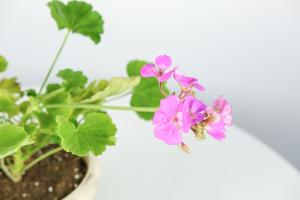How Many Beans Per Plant
Introduction
Growing beans in your garden can be a great way to add a healthy food source to your diet. Green beans, lima beans and snap beans are all relatively easy to grow, but one of the most common questions beginners ask is how many beans to expect from each plant. In this article, we will explore the factors that can affect bean yield and give you a general idea of what to expect.
Plant Variety
The type of bean plant you grow can have a big impact on how many beans you can expect to harvest. For example, pole beans tend to produce smaller yields per plant but they produce for a longer time, while bush beans tend to produce larger yields per plant but for a shorter time. Determinate bean varieties also tend to produce all their beans at once, while indeterminate varieties produce beans over a longer period of time.
Soil and Fertilizer
The quality of your soil and the amount of fertilizer you apply can also affect the quantity of beans you can expect. Beans thrive in well-drained soil that is rich in organic matter. Before planting your beans, amend your soil with compost or aged manure to ensure it has enough nutrients. You can also apply a balanced fertilizer, such as a 10-10-10, during the growing season to help give plants the extra boost they need.
Weather Conditions
Weather conditions can have a big impact on how many beans per plant you can expect. Beans thrive in warm temperatures and need at least six hours of sunlight per day. If your summer is particularly cool or cloudy, your bean plants may not produce as many beans as they would in ideal conditions. Additionally, dry weather can cause beans to develop slowly or not at all, so it's important to water them regularly.
Pest and Disease Control
If you're not careful, pests and diseases can quickly damage or destroy your bean plants. Some of the most common pests that attack bean plants include aphids, bean beetles, and spider mites. The best way to prevent pest infestations is to keep your garden clean and healthy. Remove any fallen leaves or plant debris, and keep the area around your plants well-weeded. Also, be sure to rotate your crops each year to help prevent the buildup of soil-borne diseases that can affect your bean plants.
In Conclusion
In general, you can expect to harvest 0.5 to 1 pound of beans per plant, but this can vary depending on the factors listed above. By choosing the right type of bean plant, providing it with rich soil and fertilizer, and protecting it from pests and diseases, you can help ensure a bountiful harvest. So, plant your beans with confidence, and don't forget to savor the fresh flavor of your garden-fresh harvest!

 how many times do yo...
how many times do yo... how many planted tre...
how many planted tre... how many pine trees ...
how many pine trees ... how many pecan trees...
how many pecan trees... how many plants comp...
how many plants comp... how many plants can ...
how many plants can ... how many plants and ...
how many plants and ... how many pepper plan...
how many pepper plan...
































